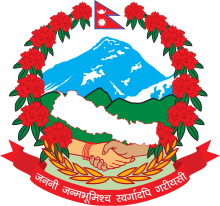History
The National Reconstruction Authority was formed in August 2015 by the Government of Nepal under Prime Minister Sushil Koirala. However, it was dissolved again, due to the government's failure to present a replacement bill. [3] The National Reconstruction Authority was then established again on 25 December 2015, exactly eight months after the devastating earthquake in Nepal. [1]
The objectives of the NRA, as articulated in the National Reconstruction Policy are: (1) To reconstruct, retrofit and restore partially- and completely-damaged residential, community and government buildings and heritage sites, to make them disaster-resistant using local technologies as needed; (2) To reconstruct (restore) damaged cities and ancient villages to their original form, while improving the resilience of the structures; (3) To build resilience among people and communities at risk in the earthquake affected districts; (4) To develop new opportunities by revitalizing the productive sector for economic opportunities and livelihoods; (5) To study and research the science of earthquakes, their impact including damages and effects, and post-earthquake recovery, including reconstruction, resettlement, rehabilitation and disaster risk reduction; and (6) To resettle the affected communities by identifying appropriate sites. [4]
Challenges
Geographic location, culture, political instability, and socioeconomic conditions contribute to slow recovery from the 2015 Gorkha Earthquake. Severe weather conditions, isolation of many affected villages, lack of government preparedness to recover, and difficulties of accepting and sending reconstruction supplies made the recovery process harder.
This page is based on this
Wikipedia article Text is available under the
CC BY-SA 4.0 license; additional terms may apply.
Images, videos and audio are available under their respective licenses.

